19 Oct 2022
Southfields Veterinary Specialists opened the doors of its huge new referral centre last month – one of the largest facilities of its kind in Europe. It marks the end of a five-year journey for all those involved with the project, but as VBJ discovered when we paid a visit, the best things really do come to those who wait…

The Southfields Veterinary Specialists team outside the new £16 million referral centre.
If any practice mirrors the rapid growth of the UK’s veterinary referral sector in recent years, then it’s Southfields in Basildon, Essex.
In less than a decade, the business has grown from one that employed 10 people in a 5,000 sq ft building to one that now boasts a team of almost 150 in a building eight times that size.
At 42,000 sq ft, the new Southfields site is probably the biggest referral centre in the UK, and while there may be one or two contenders to that crown, there has certainly never been anything built to this scale entirely from scratch.
It is a towering testament to the explosive expansion that has seen Southfields (formerly known as VRCC, prior to its acquisition by Linnaeus in 2017) transition from offering a relatively limited service focused largely on oncology to a true multi-disciplinary operation.
Oncology remains a big focus, of course, and more than £3 million of the £16 million budget to build the centre was spent on a new LINAC bunker and a top-spec TrueBeam linear accelerator to sit inside it.
But a similar sum has been invested in a 1.5 Tesla MRI machine and 64-slice CT scanner, both of which would sit comfortably in a human health care context, and it’s a similar story throughout the hospital, where every department has been equipped to the highest possible level.
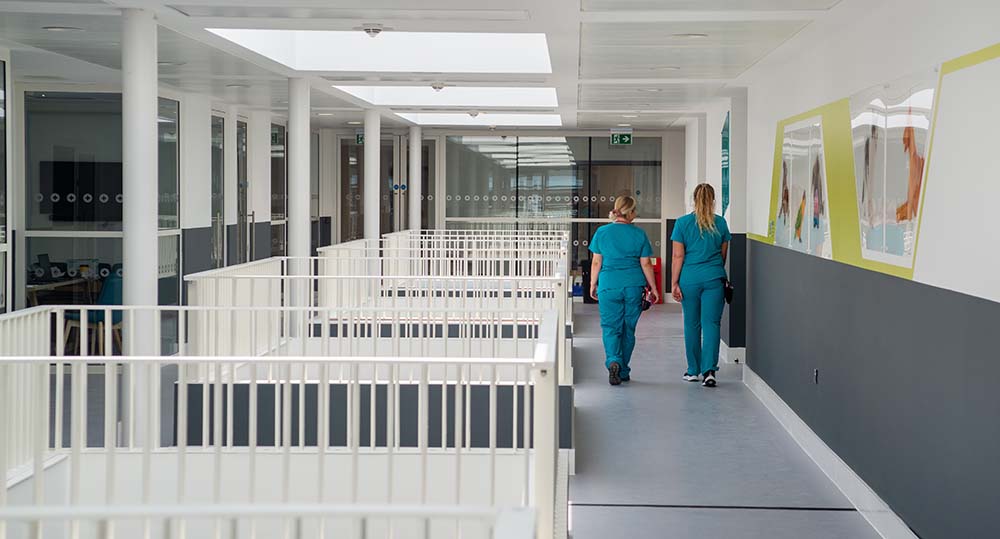
But despite all the bells and whistles, what really stands out when talking to hospital director Dan Hogan is that this glittering shrine to referral medicine has been built with its people at the heart of the process.
Dan said: “This has been so long in the planning that it is great to finally be here and to see people with smiles on their faces, taking so much pride in their new building.
“It’s been five years of work and there have been ups and downs along the way, but we worked hard to make sure the team was engaged with and involved in the process from the very start, and that is reflected in what you see here.
“What we had experienced with the old place was that it had not been designed for the people working in it, so our priorities here were the patient, then the associates and then the clients. If the team enjoys its environment, then patient care and the client experience excels.
“So, we spent a lot of time with this building asking them what they wanted – not what they wanted as a nurse or as a vet, but what they actually wanted from this building as a person.
“We spend a lot of time here and having the ability to just have a chat with someone that isn’t in a meeting room and is actually in a nice welfare space is a very different thing, and has a big impact.”
Other elements of the building designed with the team in mind are a large well-being space – where the practice hosts yoga and boxercise classes – and a huge staff room that looks more like a boutique coffee shop, complete with kitchen facilities, comfortable seating areas and a large outside space.
The building is also flooded with natural light thanks to floor-to-roof windows on many aspects, and five large voids that run the entire length of the practice and provide natural daylight to both floors at all times of year.
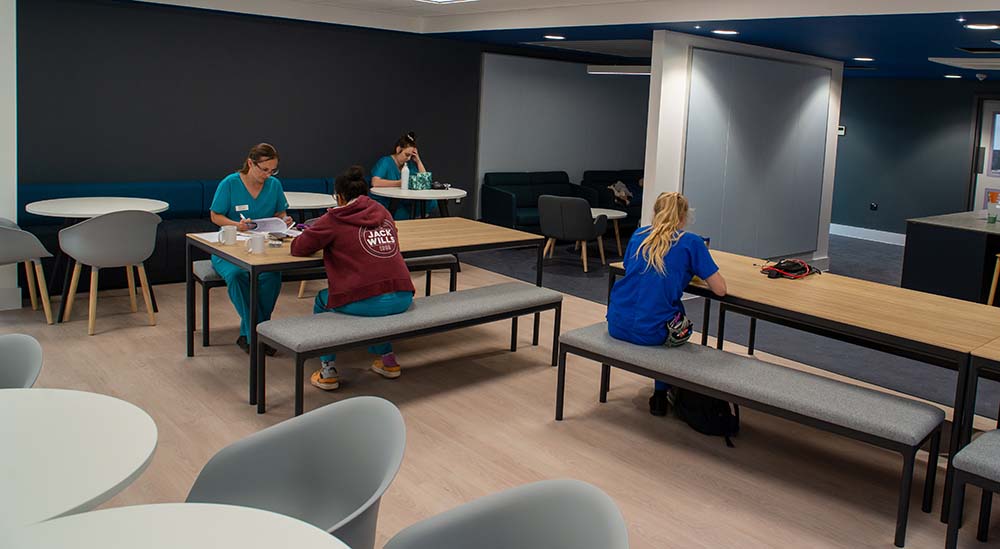
The welfare and happiness of the team was clearly high on the list of priorities when developing the new hospital, second only to the many specific needs of the patients it treats.
To this end, Dan and the rest of the leadership team spent many months travelling the UK and the US to pick up latest ideas and concepts in referral medicine.
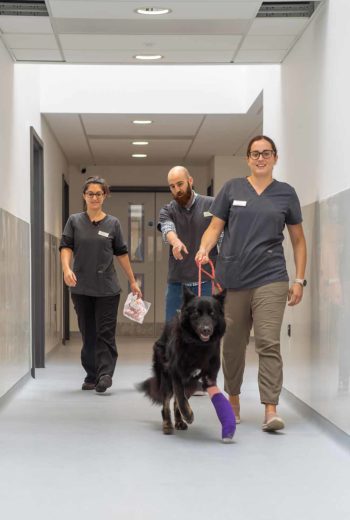 He said: “We spent a lot of time taking our drawings to referral centres outside the group and meeting their people for their feedback.
He said: “We spent a lot of time taking our drawings to referral centres outside the group and meeting their people for their feedback.
“From the UK, we obviously learned a lot from the other referral centres in the Linnaeus estate, but also from outside, particularly at Langford Vets in Bristol. They have amazing theatres set out along a long corridor with no doors on, so their clinicians can utilise the process of moving specialists between the need versus the deficit in the headcount.”
Having worked at fellow Linnaeus practice Dick White Referrals, Dan also picked up a few tips from his former employers when it came to the clinical spaces.
He added: “I worked there for six years and we learned a lot from them too, so their theatres, their process and the way they have service-divided wards that really know those areas. We took that concept and applied it to each area here.”
Other patient-led design concepts were developed with the help of Sarah Heath, veterinary specialist in behavioural medicine, who worked with the team to create the separate cat and dog entrances, waiting areas, cat and dog cat exercise areas, and a dedicated cat treatment facility dubbed “Cat Land”.
Linnaeus’ chief medical officer and feline medicine specialist Séverine Tasker was also involved with developing the Cat Land concept – a world within a world where patients are played soothing music, where pheromones waft and pictures of dogs are banned.
In fact, so granular was this thought process that plans to put a coffee machine in the cat waiting area were scrapped as the sound and smell would potentially upset patients.
The attention to detail that led to all these extra touches inevitably added to the cost, which increased by £5 million during the lifetime of the project.
But being its first new-build practice since Paragon Veterinary Referrals in 2018, Linnaeus backed Dan and his team to the hilt, and allowed them to build a hospital that would not just serve their present needs, but also their needs 10 years down the line.
Dan added: “Linnaeus were very supportive of doing something different.
“Looking at all the other centres in the Linnaeus estate, they are all exceptional centres and they are all at capacity, so we knew that we needed to get the plan right and build this place for us to grow into.
“We had to factor in that we offer radiation oncology, which takes up a large footprint anyway. Of course, we could have looked at reducing the comfort spaces and reducing size of rooms – we could have built this half the size without any future planning.”
Despite the sheer scale of the building, every effort has been made to ensure it is as sustainable as possible. The building has been repurposed rather than built from the ground up, to mitigate some of the construction impacts on the environment, while Southfields is one of the first referral practices in the UK to use in-house oxygen generators for 100 per cent of its core delivery.
Environmentally friendly products have been used in the building wherever possible, and a high-performance insulated roof and skylights ensure the building is extremely thermally efficient.
Another key sustainability feature is the solar panels, while the building also features a system that controls the mechanical and electrical systems, including sub-metering and energy monitoring, and can automatically lower temperatures when an area is unoccupied.
Where mechanical ventilation is required, the system incorporates heat recovery elements, while air source heat pumps provide heating and cooling to occupied spaces.
Dan added: “We wanted our new centre to bring together all the best ideas about clinical excellence, team well-being and sustainability, and put them into one centre – that is what makes us unique.”
One of the other aspects of the building that makes Southfields special is its LINAC accelerator. While not strictly speaking unique, the practice is the only referral centre not part of a vet school to offer in-house radiotherapy for cancer patients.
This is a service currently split between the old site in Laindon, where Southfields’ oncology department had long had an enviable reputation, and the new site, where the final touches are still being applied to the oncology building.
Like everything about the new facility, the service has been given a serious upgrade, as Dan explained.
“Obviously, we have the old bunker and the old machine and the previous site, but the treatments we will be able to offer are more advanced than the manual treatments we were able to offer before,” said Dan.
“Where most radiation treatment is at now means the only way you can reduce the volume of treatments is by increasing the radiation dose and if you increase the radiation, you increase the risk, so patients have to stay in for weeks for multiple treatments under the current system.
“But with the new TrueBeam machine, rather than a small radiation dose, you can increase the dose with its pinpoint precision. That means you can increase the radiation because you know it is only going to hit the area you are targeting.
“The machine we now have also has onboard CT, and a breathing and motion system, so it moves with the patient as it breathes, so you can not only adjust with pinpoint precision, but also adjust how far it is going through the patient.
“This all means that we can now offer a much more advanced level of radiation treatment, reduce the number of treatments and the cost to clients, and improve the outcomes for patients.”
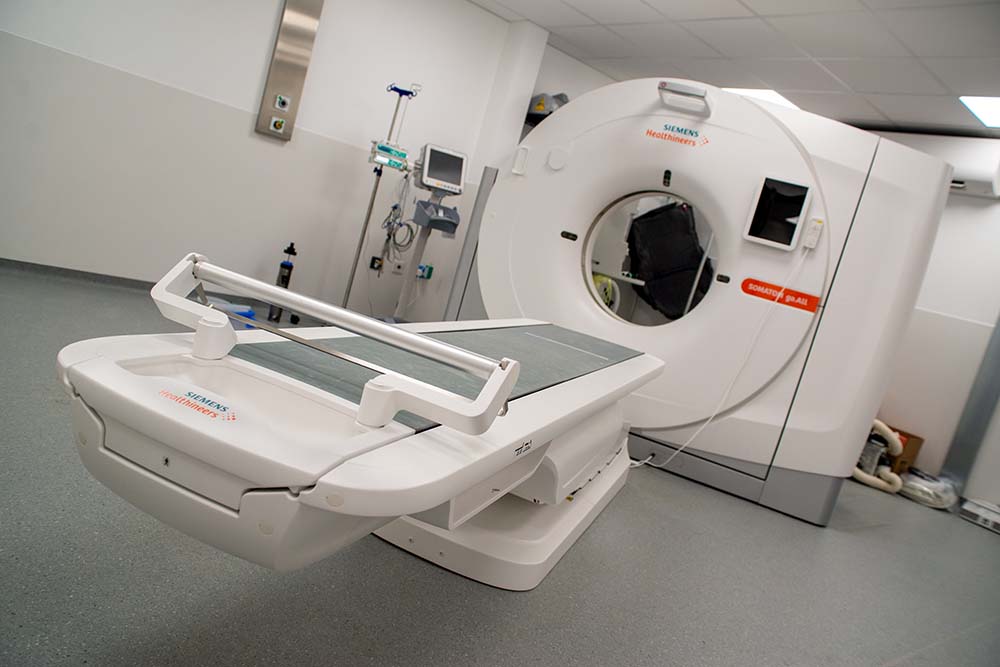
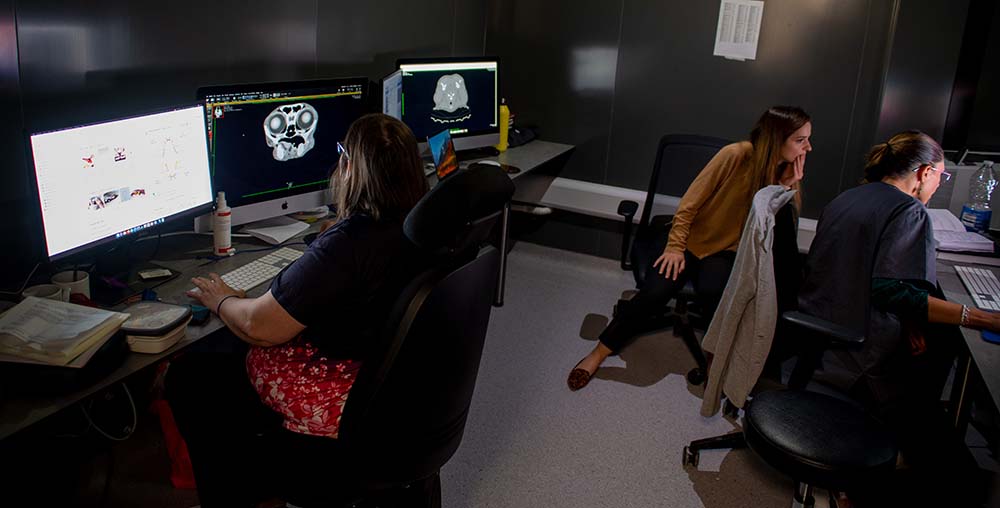
Such has been the expansion and development of the other services at Southfields, radiation therapy – which once constituted roughly 60 per cent of its caseload – now sits alongside its other core services, such as surgery, soft tissue, medicine, neurology and orthopaedics.
These services grew at a rapid rate until the previous building was practically bursting at the seams ahead of the move, with top talent across 14 specialist disciplines.
Dan added: “We never expected to attract the level of excellence that we did in the building that we had, but people seemed to get so engaged with this novel concept of building a referral centre that went in the order of patient then associate, and it meant people could buy into that.
“We are now at around 145 associates and the capacity of this new building is 311, so that would be a significantly bigger team, and the focus for us over the next two years is making sure we don’t have a single-person service in any service; everyone has at least another specialist with them.”
As anyone working in the veterinary sector well knows, however, the biggest limiters on growth in the current climate are recruitment and retention – something Dan and his team also had in mind when creating the new hospital.
With so much space, the practice will be able to significantly expand its existing residency programmes, while a 100-seat lecture theatre is the centrepiece for Southfields’ new nurse training facility.
Dan said: “Recruitment is two-fold really; from a client care point of view, there is a progression plan there and structure into which that team can grow – especially as we plan to move our client care team to a 24-hour rota – and from a nursing point of view, having the nursing college commitment in our lecture hall space is a massive win.
“Also, having big teams that can accommodate big residency programmes gives us a legacy programme for specialists.
“Currently, each service has one or two residents, and each service can easily go to two or three residents, so that is two or three specialists – after a three-year starting time – each year moving through the system, and becoming specialists at a huge centre that has all the equipment and expertise they could possibly need to support our patients.
“We are a drop in the ocean in this building at the moment, but the plan is for us to continue to develop with each service building on its own intern and residency programmes, and suddenly you have got a team of 10 going to 20 quite quickly.
“This building was built with a clear 10-year plan for the business in mind, and we are very excited by the possibilities that being here has opened up for us and our patients.”